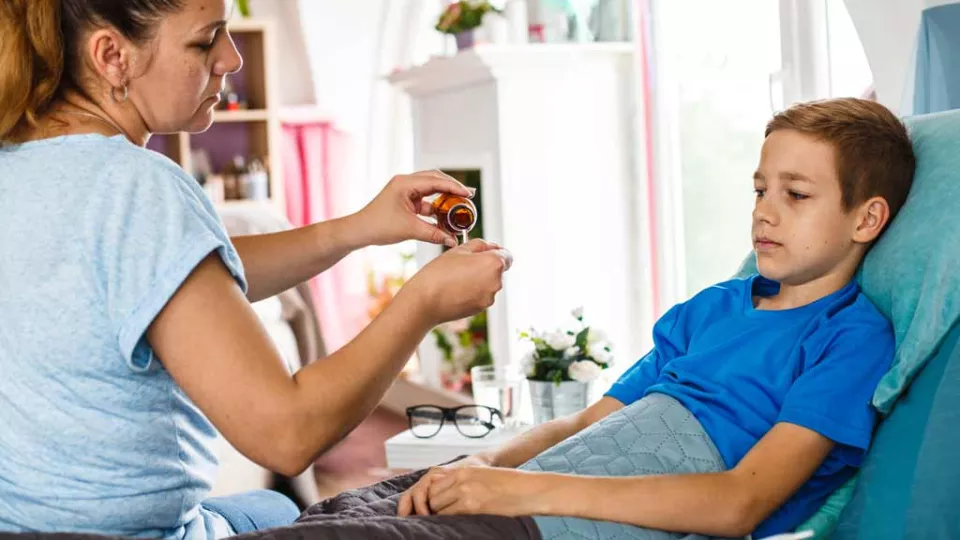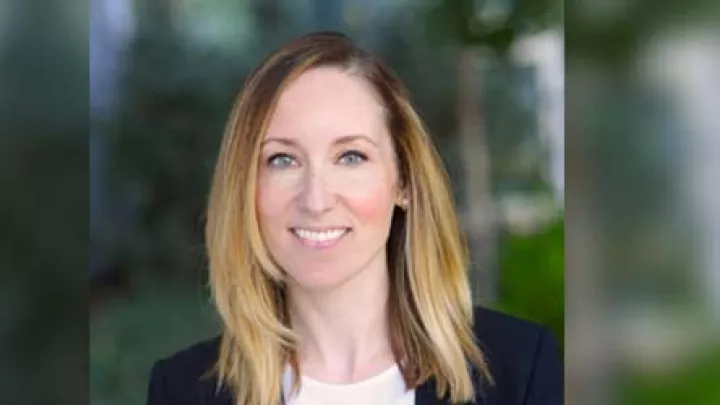
Children’s Hospital Los Angeles Surgeon Establishes First-Ever Guidelines for Pediatric Opioid Prescribing
According to the National Institutes of Health, opioid misuse and addiction in the United States is a national crisis, with an economic burden upwards of $78 billion. Opioids are useful for pain management following surgery and other major procedures, but until now there have been no recommendations guiding safe use of opioids in children. Pediatric Surgeon Lorraine Kelley-Quon, MD, MSHS, led a diverse team of health care providers and advocates to establish the first such guidance. Published in JAMA Surgery, Dr. Kelley-Quon and her colleagues outline 20 guidelines for safer pain management in children and adolescents.

“Many people are aware that there’s an opioid epidemic,” says Dr. Kelley-Quon, “but when I talk about my work, people are surprised to hear that it impacts children.”
One of the primary concerns is the use of opioids among teens and adolescents. Dr. Kelley-Quon cites a CDC report revealing that approximately 9 percent of teens aged 15-19 report receiving an opioid prescription in 2018. This age group is of concern because prescription medications can be used recreationally and shared with friends. In addition, research shows that death due to opioid overdose is on the rise for all age groups.
“Opioids can be very effective in pain management following pediatric procedures,” she says, “but we need to work with the medical community to ensure they are used safely and judiciously.”
As a member of the American Pediatric Surgical Association’s Outcomes and Evidence-Based Practice Committee, Dr. Kelley-Quon led an effort to develop evidence-based guidelines for best practice in opioid prescribing. Her team did an extensive review of scientific and medical publications, but the effort went far beyond a literature search. Dr. Kelley-Quon created a multidisciplinary group that included specialists in pediatric surgery, pediatric anesthesia, and addiction science, and included other key stakeholders representing nursing, physician assistants, surgery trainees, and family advocates. After pooling data from published studies, the entire group met and constructed the guidelines together.
“Opioid prescribing doesn’t just impact what a pediatric surgeon does,” says Dr. Kelley-Quon. “Nurses and other medical care providers are involved in pain management discussions with patients and their families, so we wanted their input as well.”
The team came up with three basic tenets, into which all the guidelines fall. First is simply a recognition that misuse of prescription opioids is a problem to be taken seriously when caring for children and adolescents. Second is to acknowledge there are many non-opioid medications that have excellent data supporting their use for children who require surgery. The team reviewed and presented those options. Finally, health care providers must educate patients and families before and after surgery about what an opioid is, what the risks are, and how they should be safely stored and disposed of.
“With these guidelines, we didn’t want to suggest that opioids should never be used,” says Dr. Kelley-Quon. “Instead, we wanted to impart the idea that they need to be used in a thoughtful way.” Just as health care providers and patients have come together around the idea of antibiotic stewardship—using an antibiotic only when medically necessary to prevent development of antibiotic-resistant bacteria—she says we should practice opioid stewardship.
The publication, endorsed by the American Pediatric Surgical Association, sets the stage to begin shaping policies around prescribing opioids in pediatric medicine, but Dr. Kelley-Quon says we are not there yet.
“We are laying the groundwork,” she says. “It is our hope that this work will change paradigms in pain management for children and teens by increasing surgeon awareness and facilitating family engagement.”
About Children’s Hospital Los Angeles
Founded in 1901, Children's Hospital Los Angeles is the highest-ranked hospital in California and fifth in the nation on the prestigious U.S. News & World Report Honor Roll of best children’s hospitals. U.S. News ranks Children’s Hospital Los Angeles in all 10 specialty categories. Clinical care at the hospital is led by physicians who are faculty members of the Keck School of Medicine of USC through an affiliation dating from 1932. The hospital also leads the largest pediatric residency training program at a freestanding children’s hospital in the Western United States. The Saban Research Institute of Children’s Hospital Los Angeles is home to all basic, translational, clinical and community research conducted at the hospital, allowing proven discoveries to quickly reach patients. Our mission: to create hope and build healthier futures. To learn more, follow us on Facebook, Instagram, LinkedIn, YouTube Twitter, and visit our blog at CHLA.org/blog.


